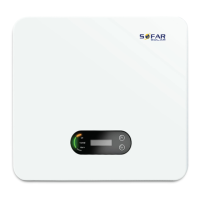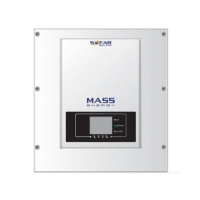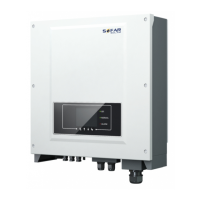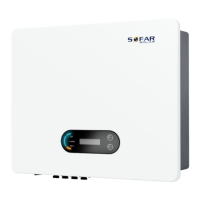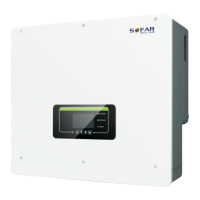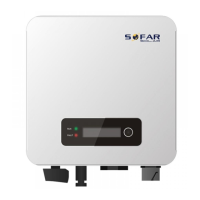
Do you have a question about the Sofar solar 1.1K-3.3KTL-G3 and is the answer not in the manual?
| Model | 1.1K-3.3KTL-G3 |
|---|---|
| Rated Output Power | 1.1 kW - 3.3 kW |
| Max. DC Voltage | 600 V |
| Start Voltage | 80 V |
| Input Voltage Range | 80 V - 550 V |
| Number of MPPTs | 1 |
| Max Input Current | 12 A |
| Rated AC Power | 1.1 kW - 3.3 kW |
| Rated AC Voltage | 230 V |
| AC Voltage Range | 180 V - 280 V |
| Rated Frequency | 50 Hz / 60 Hz |
| THDi | <3% |
| Protection Degree | IP65 |
| Cooling Method | Natural convection |
| Power Factor | >0.99 |
| Euro Efficiency | 97% |
| Operating Temperature Range | -25°C to +60°C |
| Communication | WiFi/GPRS (Optional) |
Describes the installation, electrical connections, commissioning, maintenance, and troubleshooting.
Identifies intended users for the manual: qualified electrical technical personnel.
Explains the meaning and importance of safety symbols used in the manual.
Provides essential safety instructions for installing and operating the equipment.
Introduces and explains the safety symbols used on the inverter.
Specifies the qualifications required for individuals installing and operating the inverter.
Details installation requirements and safe handling for transporting the inverter.
Provides physical dimensions and clearance diagrams for SOFAR inverters.
Explains working principles, functional blocks, and modules of the inverter.
Presents efficiency curves and the internal electrical block diagram of the inverter.
Provides crucial safety warnings and considerations before starting the installation process.
Outlines the step-by-step flowchart for installing the inverter.
Details the procedures for inspecting outer packing materials and checking deliverables.
Details the step-by-step process for mounting the inverter onto the wall.
Provides critical safety notes before performing electrical connections.
Explains how to properly connect the grounding (PGND) cables for safety.
Provides instructions and specifications for connecting DC input power cables.
Explains how to connect the AC output cables to the inverter and power grid.
Ensures DC and AC voltages are within acceptable limits before starting.
Step-by-step guide to turn on the DC switch and AC breaker to start the inverter.
Describes the buttons and indicator lights on the inverter's operation panel.
Shows examples of the standard display screens showing operational status.
Explains the meaning of different inverter states: Wait, Check, Normal, Fault, Permanent.
Provides procedures for identifying and solving common inverter problems.
Details solutions for specific fault codes and event lists related to grid conditions.
Explains troubleshooting for internal inverter faults (ID27-ID55).
Details the DC input specifications, including voltage, current, and terminal types.
Provides AC output specifications such as power, voltage, frequency, and THDi.
Summarizes general inverter data like topology, temperature range, dimensions, and protection degree.
Explains the standard warranty period and its calculation methods.
Lists conditions under which the inverter's warranty is invalidated.
Statement regarding consumer rights and remedies under Australian law.


